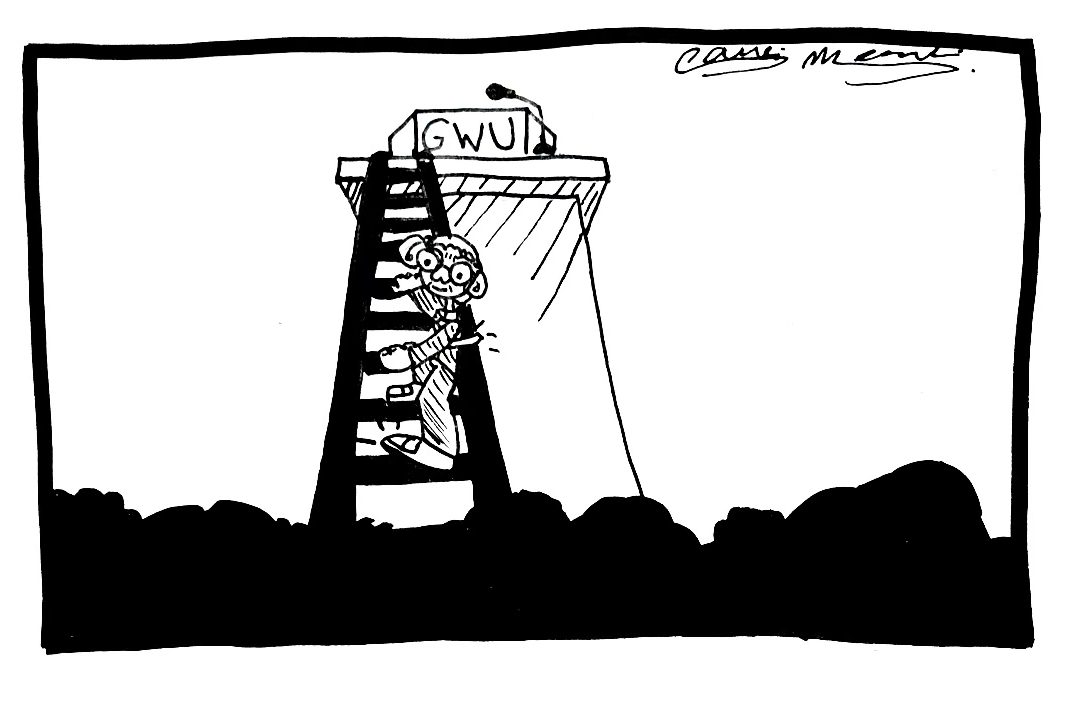When spring classes began remotely last week, it felt like March 2020 once again. I thought to myself, “Will I have to endure yet another semester where lecture halls and social interactions are replaced with Zoom breakout rooms?”
But the reality is that it is not March 2020. Now, vaccines and booster shots aid in decreasing the severity of cases and flooding of hospitals. We know more about how the virus is transmitted and the precautions to avoid it. Notwithstanding, the highly transmissible Omicron variant is now at play.
Officials “strongly” encouraged members to wear N95 or KN95 masks as in-person instruction resumes in an email sent to GW community members last Wednesday. But to take account of the recent COVID-19 surge, officials should take their recommendation a step further and require medical-grade masks in classrooms and lecture halls.
The proof is in the pudding – N95 masks can filter out 95 percent of all airborne particles when worn correctly. Well-fitting masks, like N95 masks, are proven to offer the highest level of protection when compared to disposable surgical masks and cloth masks, according to the Centers for Disease Control and Prevention. GW’s recommendation to wear N95 and KN95 masks clearly shows that officials recognize their benefits. Now, officials should take it one step further and provide safety and security on-campus by requiring them.
One of my professors required that their students only wear N95 and KN95 masks in their classroom to protect their unvaccinated toddlers at home. Officials should support professors and instructors like mine who risk their health and safety and those around them to teach in person by requiring high-quality masks in classrooms. GW can only do so much to regulate what community members do off campus, but a more diligent strategy to masking on campus is appropriate considering the circumstances.
GW has taken a rigorous approach to prevent the spread of COVID-19 on its campus, and its masking policies should reflect its previous actions. Students are required to take COVID-19 tests every two weeks to access campus buildings and facilities – and further, students must be vaccinated and boosted to attend classes unless exempted for approved medical or religious reasons. When the CDC rolled back its quarantine period from 10 days to five days for those who’ve contracted COVID-19, GW maintained its 10-day quarantine period for infected students per Mayor Muriel Bowser’s guidance.
GW can and should be doing more to combat the spread of COVID-19 on its campus and in the greater D.C. area. In addition to the contact-tracing system in place for student organizations and clubs, a high-quality respirator mandate should be extended to such meetings, events, practices and performances. While student organization meetings certainly enhance one’s college experience, in-person meetings are not essential during an ongoing pandemic. If GW permits in-person student organization meetings, a more robust policy on masking would be pertinent to consider.
Although GW’s daily caseload has leveled out in recent days and interim University President Mark Wrighton said in an interview last week that no one in the GW community was experiencing a severe case at the time, we’re not out of the woods yet. D.C. has sustained a 24 percent positivity rate and has seen a more-than-two-fold increase in hospitalizations over the past two weeks.
Confirmed positive cases of COVID-19 have mounted to a daily average of 763,855 in the United States – more than three times last winter’s peak average, according to John Hopkins University data. Nearly 157,000 people in the United States are hospitalized with COVID-19, according to data from the U.S. Department of Health and Human Services, exceeding records set in last winter’s surge.
Face coverings are one of the few methods we have to protect ourselves and others from COVID-19 – and which ones are worn should be on top of mind, not an afterthought or suggestion. Even if COVID-19 cases begin to decline and restrictions start easing as well, a strong stance on masking would only maintain a sense of security on campus. After all, wearing a different type of mask is not a hefty inconvenience.
Accessibility to higher quality masks once was an issue as shortages in supply are ubiquitous, and prices are constantly rising. But as N95 and KN95 masks become more readily available, GW has a responsibility to ensure that individuals wear them on a large scale.
David Ruff, a sophomore, is an opinions writer.


